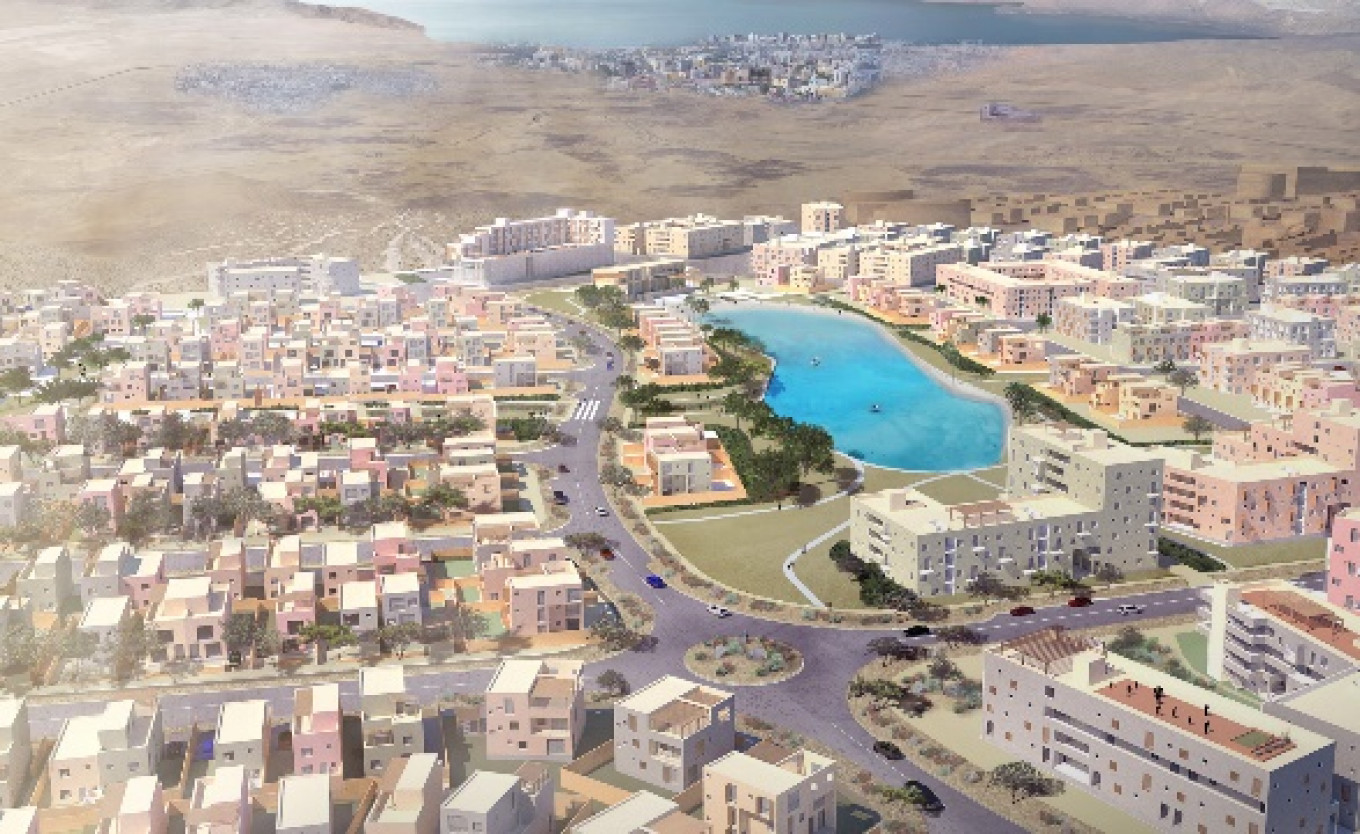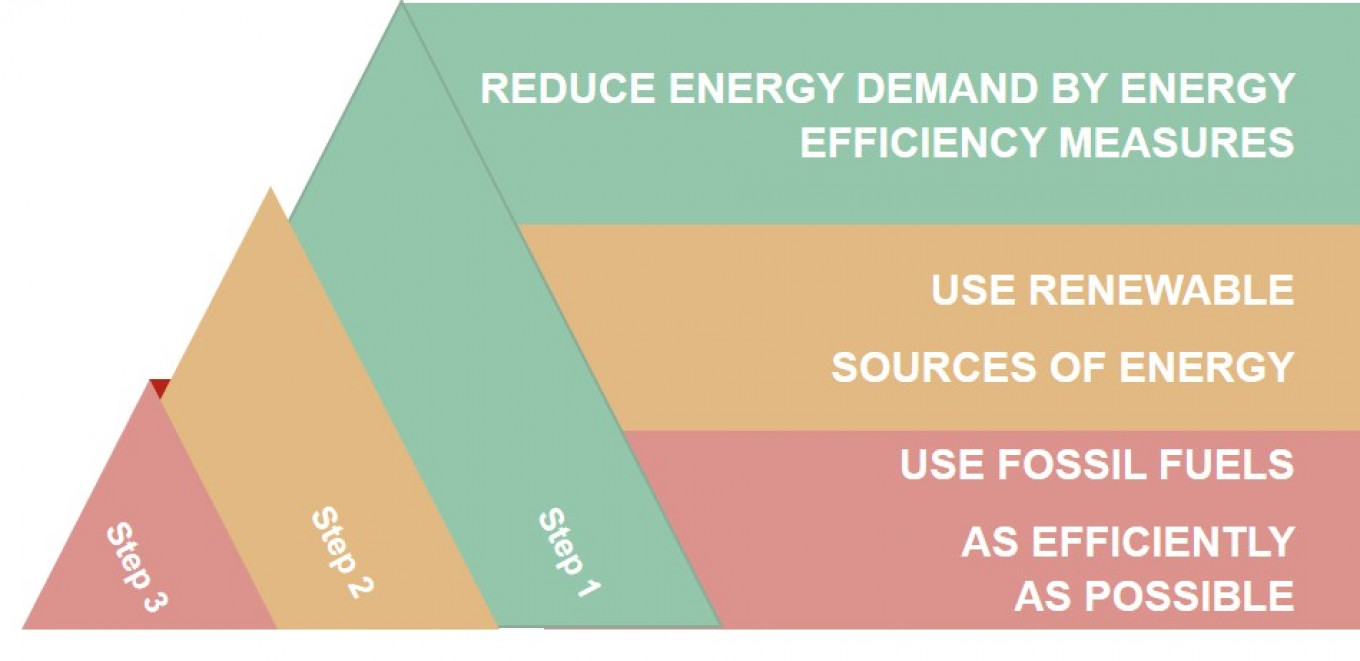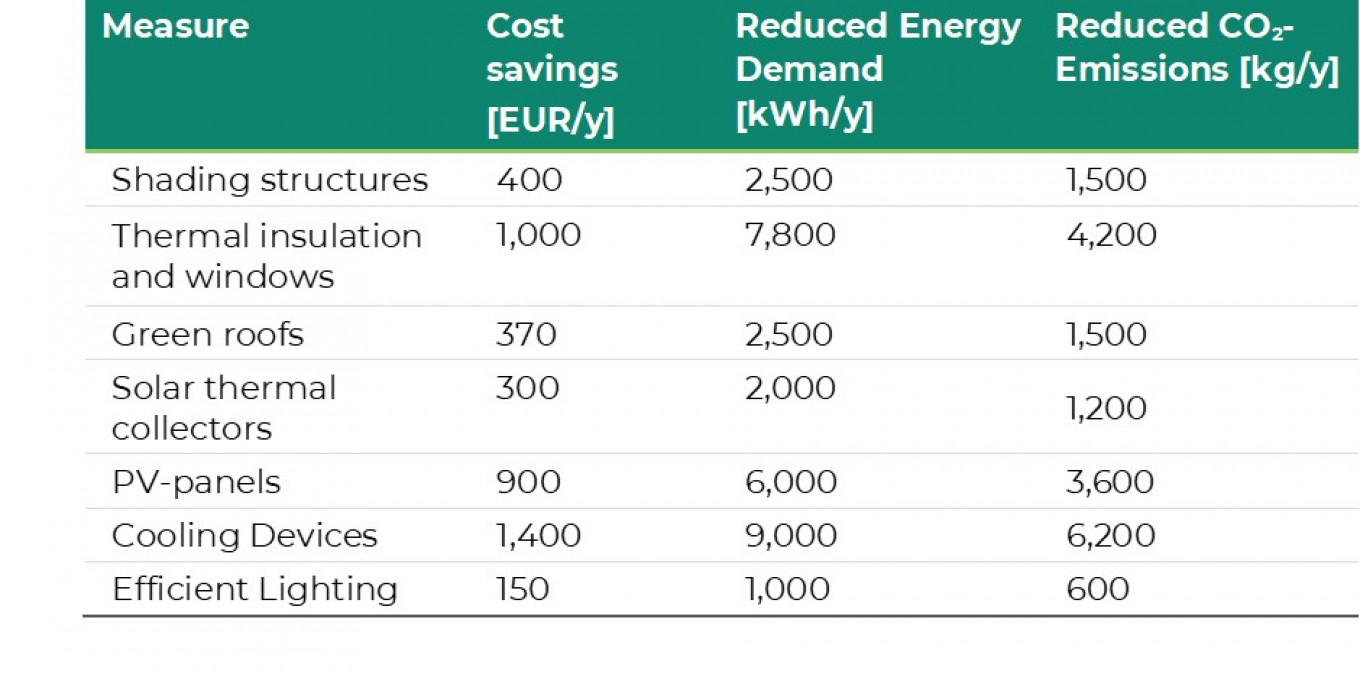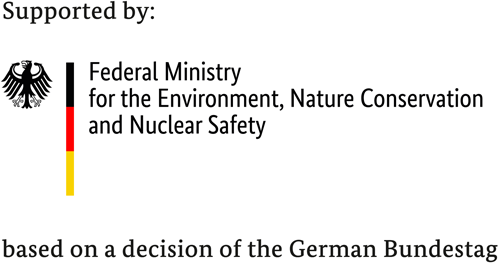North Project, Aqaba (Jordan)
General Information
The Villa options offered by the North Project in Aqaba range from modest Premier Villas on small plots to Executive Villas on spacious parcels. The measures and potentials discussed are designed and quantified for the Premier Villa. The project is designed to contain Premier Villas for 796 inhabitants. Aqaba has a population of approximately 150,000 and is of special importance to Jordan because it is the country’s only coastal city. For the same reason, commercial and industrial activities are important for the local economy, with a growing tourism sector. The North Project currently has two arrival points from the north and east with future connections to the south and west. The site is accessed from both the Dead Sea Highway and the Desert Highway and is approximately 10 km from Downtown Aqaba by car. In the future, the site will directly connect to the Mourjan project to the west and with future development to the south. Nearby facilities such as the University of Jordan, public and private schools, mosques, and health service are all accessible via car with a maximum travel time of 10-15 minutes. The King Hussein International Airport is a 10-minute (7 km) drive.

qaba’s average mean temperature ranges from an average low of 18.3°C to an average high of 30.9°C. During the summer months, the average maximum temperature reaches 38°C-40°C between June and August. This temperature leads to a cooling demand of 1,150 cooling degree days; at the same time, the solar irradiation of 2,448 kWh creates high potential for harvesting solar energy. The low amount of annual rainfall of approximately 24.6 mm creates water scarcity challenges that require low water-consumption landscape and architectural strategies. Also, there are significant impacts from flash floods; currently, several dams are under construction to address insufficient storm water capacity. Without further investment from local authorities, a flood might threaten the North Project.
Concept
As the project was in an immature phase (master planning) and the project developer intended to sell lots rather than build, the BUILD_ME team emphasized increasing awareness and provided single measure calculations to give architects/homeowners freedom to apply measures as best fit. The outcome is intended as a flyer/brochure, clearly illustrating the best energy efficiency and renewable measures for this specific master plan area.
Possible Measures
Recommendations for this master plan area based on the Trias Energetica methodology include:
- Energy efficient design: Optimised orientation of a building reduces solar heat gains and the related cooling load, leading to lower operational costs. On the north and south façades, solar radiation is normally lower than on the east and west façades. Therefore, the building should be orientated along the east-west axis, with the largest surfaces facing north and south. Additionally, a bright envelope colour for roof and external walls is an effective measure to reduce solar heat gains. Finally, reducing the window fraction for façades facing the south, east, and west is recommended to minimise solar heat gains and decrease the cooling energy demand. The reduced window fraction should be less than 20 %, based on the Window-Wall-Ratio. These measures have a short payback period of less than two years.
- Shading structures: Shading structures in front of windows are important for the climate conditions inside the building, especially in the east, south, and west directions. External shading devices for windows are much more efficient than internal window coverings. They reduce heat gains by 70%-85%, whereas internal coverings can reduce heat gains by as little as 15%. These measures also have a short payback period (less than two years).
- Thermal insulation: Improved wall and roof insulation reduces heat loss or gain and lowers the energy demand for heating and cooling. Common insulation materials used to reduce heat loss include (by decreasing efficiency): polyurethane foam, mineral wool, stone wool, polystyrene, cellulose, and vermiculite. However, transmission losses from windows are approximately four times the losses of massive building elements. Thus, windows should achieve an insulation level of at least 1.50 W/m²K. These measures have a long payback period (higher than 15 years).
- Green roof: Rooftop vegetation moderates extreme temperatures and UV radiation, which extends the lifespan of the roof by around 20 years. Additionally, the vegetation collects storm water, filters particulates and pollutants, and serves as a cooling layer on the roof. The evaporation process helps to cool air temperatures and reduces the heat island effect, which benefits the whole area. The cooling effect also has a positive impact on the efficiency of PV modules on the roof. This measure has a long payback period (higher than 15 years).
- Solar thermal collectors: A typical option for single-family houses is a combination of small-scale collectors with integrated hot water storage. They are sufficient to cover low or medium hot water demands and have economic advantages compared to big systems. This measure pays back in the medium term (around 5 years).
- PV panels: PV competes against solar thermal collectors in terms of space on the roof. Thermal collectors have proven to be more economical, although the cooling effect of green roofs in combination with PV may influence this estimation. Therefore, solar thermal collectors should be used to cover the domestic hot water demand and, if there is still roof space, PV panels could be installed. This measure pays back in the medium term (around 5 years).
- Cooling efficiency: Using cooling systems with a Seasonal Energy Efficiency Ratio (SEER) of greater than 4.5 is recommended. Air intake on the roof should be at 2 meters to ensure cooler air temperatures. Also, the implementation of highly efficient fans should be considered. These measures pay off in the short term (less than 2 years).
- Lighting efficiency: Energy efficient light bulbs include CFLs and LEDs. These types consume between 25% and 80% less energy than conventional light bulbs and can last 3 to 25 times longer. Also, these light bulbs are available in a variety of colours and light levels and may be used as architectural design elements. This measure is easy to apply and has a short payback period (less than 2 years).
Results
Investing in efficiency measures is strongly recommended for economic and ecological reasons. For the Premier Villa, payback times for single measures range from less than 1 year to 15 years. If all presented measures are considered, a payback time of around 8 years with annual savings of around EUR 2,900 in energy costs are possible, this translates to 20,000 kWh yearly energy savings and yearly CO2 savings of 12,000 kg CO2.
First, the building should be planned using energy efficient design guidelines, including (passive) natural cooling, following the Trias Energetica concept. These efficient design measures offer huge benefits for no or low additional costs and should be discussed with the responsible architect during the planning process.
The effects of single measures are greater than in combination with other efficiency measures because most measures target similar goals (e.g., room temperature). However, savings will rise as more measures are taken. A combination of all measures leads to the biggest long-term savings and will benefit the neighbourhood by decreasing the heat island effect.
Costs:
Additional invest costs: ~€25,000
Return:
About €2900/yr
Payback Period:
Medium (8-9 yrs)
Although Trias Energetica should be respected, the best options regarding cost-optimality and lifetime are:
- Efficient building design
- Shading structures
- Cooling efficiency
- PV panels
- Efficient lighting
- Insulation
- Solar thermal modules
- Green roofs






